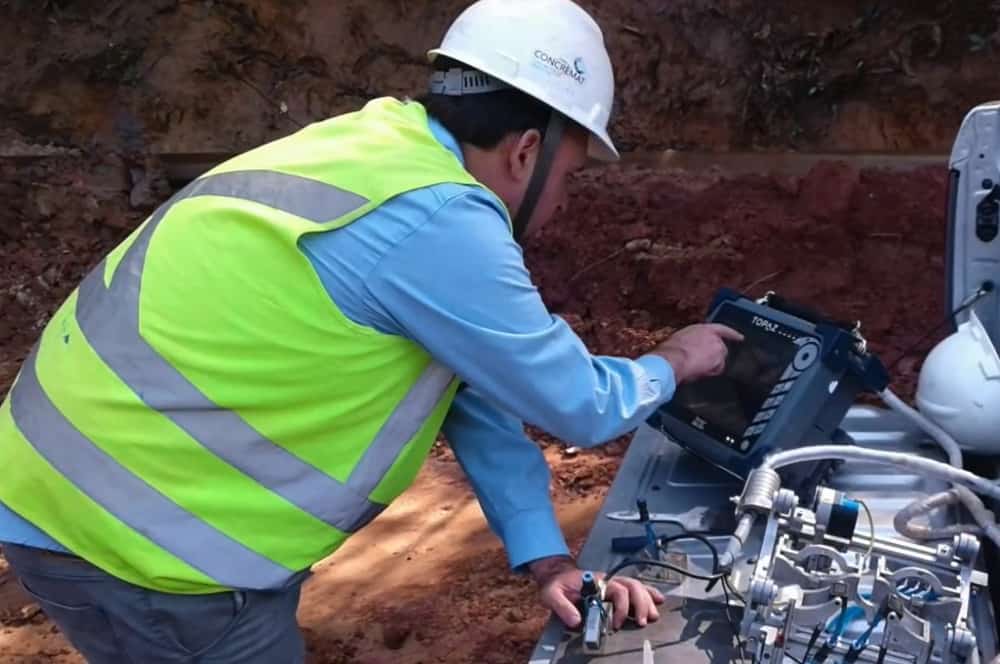How is Ultrasonic Inspection Used in Industry?

The industrial reliance on ultrasonic testing (UT) as their primary non-destruction inspection methodology is at its all-time high. This includes aerospace, construction, automotive, oil and gas, power generation, manufacturing, or nuclear industries where UT is utilized as an immediate quality control method. With UT capabilities expanding as a result of newer methods and technologies, the industrial repertoire of UT inspection seems to be ever-increasing.
Here we discuss the industrial usage of UT inspection and its applicability for a wide range of applications.
How Does the Ultrasonic Inspection Method Work?
Most industries make use of UT for the following purposes:
- Quality control
- Routine or emergency inspection
- Preventive maintenance
For either of these purposes, the UT method assists by identifying the existing flaws such as cracks, corrosion, inclusions, porosity, or any other thickness or metallurgical change in the inspection material. UT does so by utilizing transducers that emit high-frequency ultrasonic waves, usually within the range of 0.1 to 15MHz, which pass through the material to diagnose it. The reflected wave received by the receiver is then analyzed to identify and characterize the flaws.
Having this data allows industries to skim out the defective batches and standardize the production process to ensure quality control.
How Different Industries Leverage the Benefits of Ultrasonic Testing
In the upstream, midtown, or downstream oil and gas industry, UT inspection is used for inspection of pipes, storage tanks, welds, and more for preventing material or equipment failure, protecting pipelines and equipment, and ensuring the safety of workers, operation, and environment. Phased array ultrasonic testing (PAUT) and TOFD (Time of Flight Diffraction) make this possible through accuracy, precision, and speed in testing, ensuring quality and productivity.
Read more about Ultrasonic testing for the oil and gas industry.
Ultrasonic testing in manufacturing can broaden to many areas from automotive to heavy-duty manufacturing including pipes and tubes. Each of the manufacturing processes requires careful inspection of components to identify potential flaws. The powerful capabilities of UT instruments, probes, and software has been adopted by manufacturing industries as a quality control tool that analyzes the flaws for potential risks. This is crucial in improving safety, productivity, and in reducing manufacturing downtime.
Read more about how UT solutions help manufacturers maximize uptime and quality.
How is Ultrasonic Inspection Used in Industry: Transportation
Aerospace or aviation industries use ultrasonic testing for ensuring the quality of their wide component ranges, each of which is crucial for proper aircraft functioning. This includes assessing composite materials, complex geometries, and for components like engines, gears, airframe and fuselage, honeycomb structures, and many others. With flexible, portable, and powerful UT solutions, it is easier to perform a volumetric inspection on these complex structures to ensure each part is conforming to industrial standards.
Read more about NDT solutions for the aerospace industry.
Railways require proper inspection of their tracks for wear and tear, corrosion, and other flaws. Instruments with PAUT and TFM (Total Focusing Method) capabilities provide in-depth focusing and beam customization capabilities which help to achieve excellent coverage. The collected high-quality data and resulting 3D map support detection and characterization of major and minor flaws that can compromise the safety of the railway system.
Read more about using UT for railway track inspection.
In the manufacturing of automobiles, each part requires careful engineering and safety checks to ensure none of the parts are defective and can fulfill their proper functionality. With UT, the quality of welds, complex geometries, or composite structures can be easily assessed to ensure they are free of flaws.
Learn more about NDT in the automotive industry.
How is Ultrasonic Inspection Used in Industry: Power Generation
Power generation industries, be it nuclear or fossil fuels or wind energy, require many infrastructures with the capability to support high-temperature and pressure requirements. A small flaw can be catastrophic in these industries. Ultrasonic testing can support in-depth flaw detection to identify even the minor flaws in crucial components.
PAUT inspection can assess components like blades, towers, rotor shafts, and gearbox for the potential presence of corrosion, cracking, lack of bonds, etc. in the wind turbines and fossil fuel plants.
Read more about NDT for wind energy and fossil fuel plants.
Key components like blades, rotors, heat exchanger tubes, and vessels require inspection in nuclear power plants for potential pitting corrosion, cracking, or other flaws. In a nuclear facility, UT solution can help identify flaws in difficult-to-reach and hazardous areas with reduced risk of error.
Read more about NDT for nuclear inspection.
The versatility of ultrasonic testing has made it a trusted technology for quality control in a wide range of industries. With Zetec’s advanced UT solutions, these industries can identify flaws, perform pre- or in-service inspections, and maintain the quality standards of their product and services.
Zetec provides exceptional ultrasonic testing solutions for a wide range of industrial applications. To find the NDT equipment which best suits your testing needs, contact us today!

Zetec’s designers are industry-leading experts in ultrasonic and eddy current technologies, and we can help you navigate any of our NDT testing solutions or devices.
